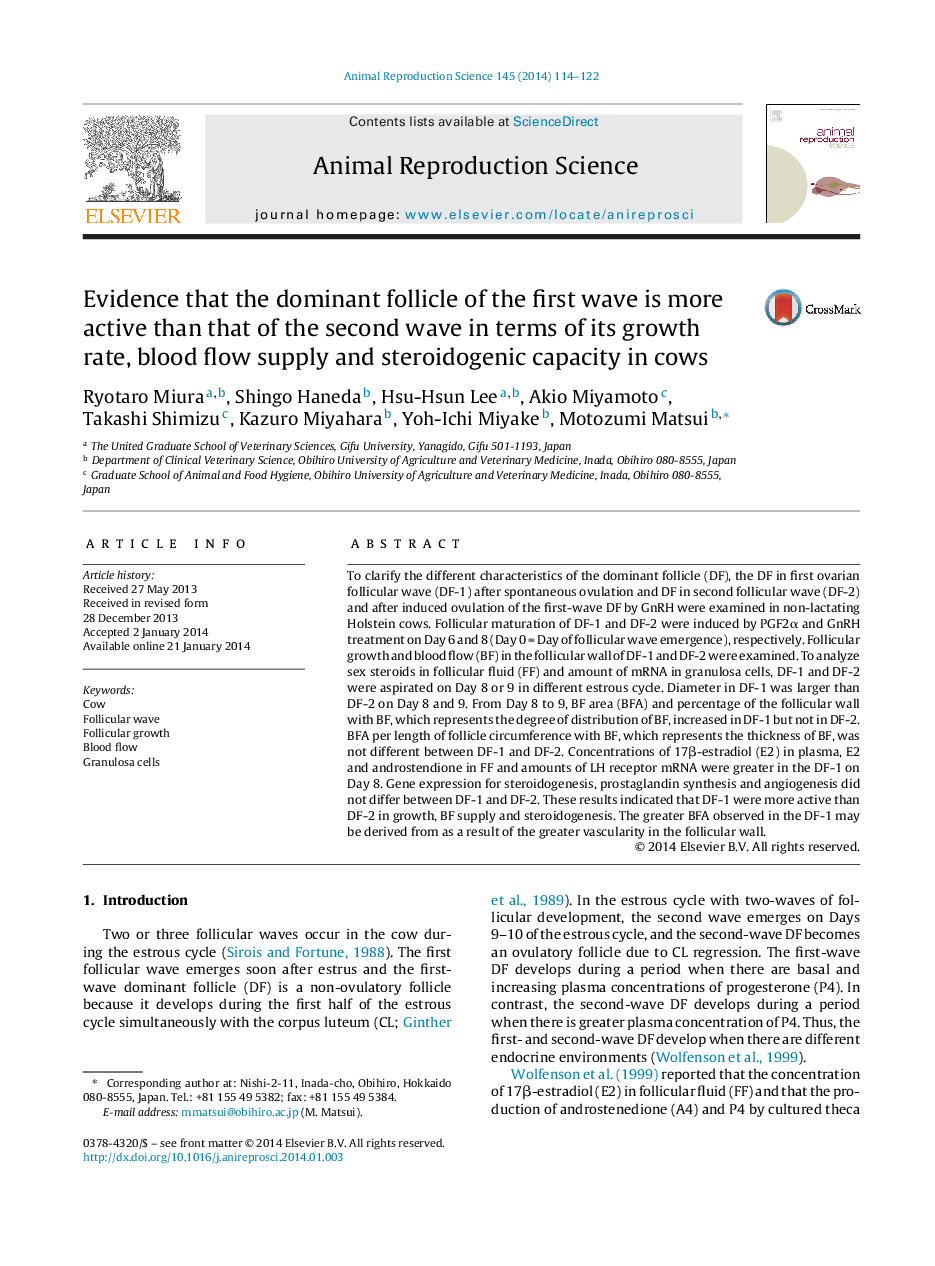| Article ID | Journal | Published Year | Pages | File Type |
|---|---|---|---|---|
| 2072968 | Animal Reproduction Science | 2014 | 9 Pages |
To clarify the different characteristics of the dominant follicle (DF), the DF in first ovarian follicular wave (DF-1) after spontaneous ovulation and DF in second follicular wave (DF-2) and after induced ovulation of the first-wave DF by GnRH were examined in non-lactating Holstein cows. Follicular maturation of DF-1 and DF-2 were induced by PGF2α and GnRH treatment on Day 6 and 8 (Day 0 = Day of follicular wave emergence), respectively. Follicular growth and blood flow (BF) in the follicular wall of DF-1 and DF-2 were examined. To analyze sex steroids in follicular fluid (FF) and amount of mRNA in granulosa cells, DF-1 and DF-2 were aspirated on Day 8 or 9 in different estrous cycle. Diameter in DF-1 was larger than DF-2 on Day 8 and 9. From Day 8 to 9, BF area (BFA) and percentage of the follicular wall with BF, which represents the degree of distribution of BF, increased in DF-1 but not in DF-2. BFA per length of follicle circumference with BF, which represents the thickness of BF, was not different between DF-1 and DF-2. Concentrations of 17β-estradiol (E2) in plasma, E2 and androstendione in FF and amounts of LH receptor mRNA were greater in the DF-1 on Day 8. Gene expression for steroidogenesis, prostaglandin synthesis and angiogenesis did not differ between DF-1 and DF-2. These results indicated that DF-1 were more active than DF-2 in growth, BF supply and steroidogenesis. The greater BFA observed in the DF-1 may be derived from as a result of the greater vascularity in the follicular wall.
